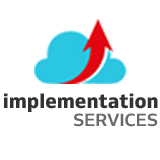Material shortages in the manufacturing industry are a significant challenge that can disrupt production schedules, delay market deliveries, and ultimately impact a company’s bottom line. Manufacturers must develop strategies to acquire materials promptly to meet market demand and ensure smooth manufacturing processes. This blog delves into the causes of material shortages and how ERP solutions can help manufacturers navigate these challenges effectively.
Causes of Material Shortages
Supply Chain Disruptions
Supply chain disruptions are one of the most common causes of material shortages. Natural disasters, geopolitical tensions, pandemics, and logistical bottlenecks can severely impact the supply chain, delaying or halting the delivery of critical materials. These disruptions can cause a ripple effect, affecting the availability of materials, cost, and quality.
Increased Demand
Sudden spikes in demand, often driven by market trends or seasonal variations, can lead to material shortages. When manufacturers cannot predict these demand fluctuations accurately, they may find themselves unprepared and unable to source the necessary materials in time. This situation is exacerbated when multiple industries compete for the same raw materials.
Quality Issues
Quality issues with raw materials can also contribute to shortages. When materials fail to meet required standards, manufacturers may need to reject entire shipments, leading to delays and the need to find alternative sources. Ensuring consistent quality from suppliers is crucial, but even the most reliable suppliers occasionally face issues that disrupt supply.
Production & Raw Material Delays
Delays in production and raw material extraction can lead to shortages. Factors such as labor strikes, machinery breakdowns, and inefficiencies in production processes can slow down the supply of raw materials. Additionally, delays in the extraction of raw materials like minerals, metals, and agricultural products can create bottlenecks in the manufacturing process.
Lack of Visibility & Communication
A lack of visibility and poor communication within the supply chain can exacerbate material shortages. Without real-time data and effective communication channels, manufacturers may be unaware of potential shortages until it is too late to take corrective action. It can lead to rushed decisions and suboptimal sourcing strategies that compound the problem.
How ERP Helps Navigate Material Shortages
Streamlines Procurement
ERP system simplifies the procurement process by providing a centralized platform for managing supplier relationships and purchase orders. This centralization allows manufacturers to automate and optimize their procurement processes, ensuring timely and cost-effective material sourcing. With features like automated reordering and supplier performance tracking, ERP systems help maintain a steady flow of materials.
Centralizes Data Collection
One key benefit of ERP systems is their ability to centralize data collection. ERP systems provide a holistic view of material availability and usage by integrating data from various departments, including procurement, inventory, and production. This comprehensive data collection enables manufacturers to make informed decisions and anticipate potential shortages before they impact production.
Manages Complex Vendor Relations
Managing relationships with multiple vendors can be complex and time-consuming. ERP systems simplify vendor management by consolidating vendor information and performance metrics in one place. Manufacturers can easily track vendor reliability, lead times, and compliance with quality standards. This improved vendor management ensures a more reliable supply chain and reduces the risk of raw material shortages.
Makes Production Planning Efficient
ERP systems enhance production planning by providing real-time insights into inventory levels and production schedules. It allows manufacturers to align their production plans with material availability, minimizing downtime and ensuring a smooth manufacturing process. Advanced planning and scheduling tools within ERP systems enable manufacturers to optimize resource allocation and respond to changes in supply chain disruptions.
Conclusion:
Embracing Acumatica Cloud ERP transforms raw material management for manufacturers by streamlining procurement, centralizing data collection, managing complex vendor relations, and making production planning more efficient.
With its robust features and real-time insights, Acumatica helps manufacturers navigate material shortages effectively, ensuring they can meet market demand and maintain smooth, uninterrupted production processes.

Vijay comes with a vast experience in ERP and enterprise solutions space with about 20 years of experience in various packaged application like Acumatica, SAP, Orion, Salesforce.com, SugarCRM and, SalesLogix.
















